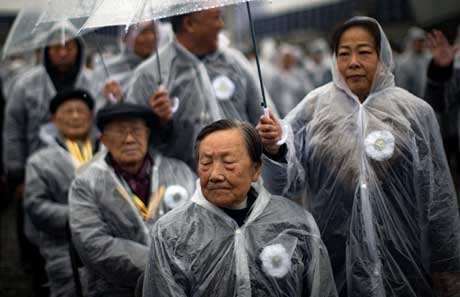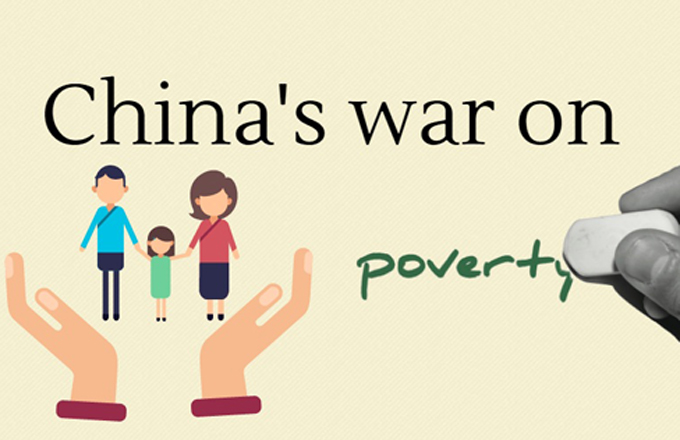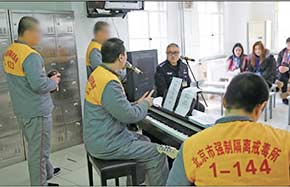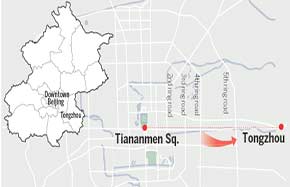UN Official: China needs to view disability more broadly
Editor's Note: Ahead of the International Day of Persons with Disabilities, Nicholas Rosellini, the newly appointed UN Resident Coordinator and UNDP Resident Representative in China, spoke with China Daily.
Q: How much progress has China made in providing access to justice for people with disabilities?
A: One major progress has been the establishment of a comprehensive national legal aid system to guarantee basic legal services to vulnerable citizens. People with disabilities have been a primary target group of legal aid since the promulgation of the Legal Aid Regulations in 2003.
The system has a broad network of legal aid stations nationally covering more than 40,000 counties and towns. By the end of 2015, with support from local disabled persons' federations, nearly 3,000 legal aid workstations specifically targeting persons with disabilities were set up in China.
In a recent study on access to justice for persons with disabilities in China, the UNDP found that local governments and disabled person's federations in many regions have developed valuable good practices to enforce the legal aid system and better uphold the rights of persons with disabilities.
These practices include extending the coverage of legal aid to make it more accessible for people with disabilities, exploring different forms of legal awareness-raising for them, strengthening the skills of legal aid providers in handling cases, and providing accessible facilities and services for persons with disabilities during the process of accessing legal aid.
Q: What is the biggest challenge people with disabilities face in China?
A: Disability is a growing issue in China. Currently, China has the largest community of women and men with disabilities in the world with over 85 million people. The World Health Organization predicts that China will experience a 70 percent increase in the number of people dependent on daily care from 2000-2050.
But this issue has not been brought into the mainstream's attention. Disability is considered a "medical" condition that the individual with impairment has the main responsibility to deal with, rather than result of the interaction between impairments and the attitudinal and environmental barriers faced by persons with disabilities.
Social perceptions as such can have practical implications to people with disabilities in accessing services and support. For example, overemphasis on the client's medical condition may restrict legal practitioners from accepting cases involving persons with disabilities, or result in patronization of the client.
Moreover, in the UNDP's recent study, people with disabilities said a "low level of education among persons with disabilities" was the biggest barrier to their access to justice, blaming themselves rather than external factors for the disadvantages they face.
The prevailing medical way of thinking on disability has affected both service providers in effectively implementing the rich tools and policies that are available, and led to low self-confidence among persons with disabilities themselves in seeking support.
Q: The Chinese government has promised to lift everyone out of poverty by 2020. It has also admitted that people with disabilities tend to be more vulnerable in the face of poverty. How can the UNDP better work with China in this regard?
A: Disabilities are deeply interlinked and mutually-constitutive with chronic poverty. In China, 75 percent of people with disabilities live in rural areas. More than 10 million persons with disabilities live under the national poverty standard, and 60 percent of poor, rural persons with disabilities live in areas outside the coverage of national poverty alleviation campaigns, and therefore consequently cannot access targeted social services.
In the meantime, rural people with disabilities bear twice the medical expenditures than the national average.
China has made remarkable progress in lifting the mass population out of poverty. The challenge now lies in rolling out a comprehensive program of targeted "precise" poverty reduction that can provide customized services to people with differing conditions.
Going forward, the UNDP can work with China to deliver its goal and unleash the development dividends of its poverty reduction strategies. This means, first and foremost, enabling evidence-based decision-making and enhancing policy effectiveness. That's why data and tracking of the progress will be crucial, especially where there remain data gaps such as on the extent of major illnesses such as HIV and AIDS, and for certain groups such as women, children, the disabled and ethnic minorities among whom the rate of poverty is high.





















